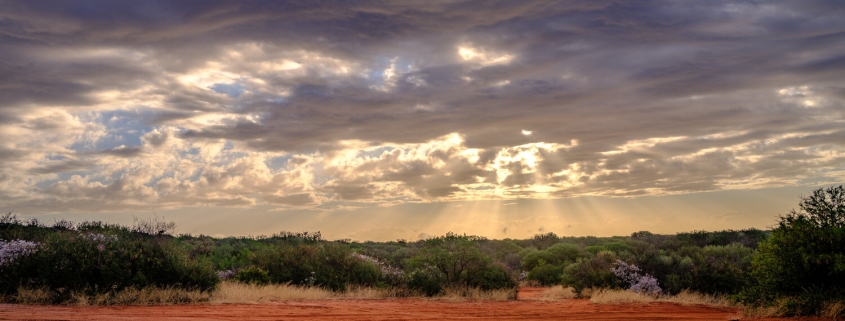Study of 1921 Shark Bay cyclone sheds light on present dangers
A historical account of fish being stranded up to nine kilometres inland by a cyclone in Shark Bay a century ago has been used with numerical modelling to help assess current risks from extreme weather to areas on the edge of tropical cyclone zones.
The cyclone struck the area, 750km north of Perth, in 1921 killing two people, flooding the shores of the outer gulf and causing extensive harm to the pearling industry, seagrass meadows and freshwater wells which remained saline for decades.
The research paper, The utility of historical records for hazard analysis in an area of marginal cyclone influence published in Communications Earth and Environment, reconstructed the cyclone partly through extensive surveys of State and national archives including accounts by a pearling inspector. It also involved using a groundbreaking approach, Quantified Historical Data Framework, to do a structured analysis of archival information to evaluate the authenticity, consistency and relevance of reports of the extreme weather event.
Dr Jenny Shaw, Research Director for the Western Australian Marine Science Institution, worked on the paper in collaboration with researchers from the Nanyang Technological University in Singapore, The University of Western Australia, University of Sydney, Griffith University, Baird Australia and Minderoo Foundation.
Lead author Associate Professor Adam Switzer from Nanyang Technological University’s Earth Observatory of Singapore said the study engaged a diverse team of historians, geoscientists, marine biologists and engineers, showing the need for multidisciplinary collaboration to tackle complex issues such as the risks of cyclones and storm surges in a warming world.
The study noted tropical cyclones were likely to shift poleward in a warming climate and some researchers had suggested the trend was particularly obvious in the Southern Hemisphere.
“This approach provides researchers worldwide with a valuable framework for leveraging historical documents to derive actionable modeling parameters, benefiting areas that face similar challenges,” Associate Professor Switzer said.
Dr Shaw said the study of the cyclone, which struck what is now a World Heritage site, found it had a major ecological impact in a similar way to TC Yasi in Queensland in 2011.
“A recurrence would likely have considerable long-term knock-on effects to ecosystem functions and services, particularly as the seagrasses of Shark Bay contribute to several World Heritage values,” Dr Shaw said.
One of the accounts of the cyclone, found during a search of archives, was by Pearling Inspector Wally Edwards, who witnessed the cyclone and its aftermath.
He described seeing ship groundings, inundated coastal wells, flooding, an altered coastal landscape and sharks and fish stranded inland.
Longer term impacts included livestock losses, declines in the shells used in the pearling industry and reports that dugongs were seen less frequently in the years after the cyclone.
The researchers said a similar cyclone, assessed to be between a category four and five, would inundate the town of Denham flooding critical infrastructure and damaging important industries.
Dr Joseph Christensen, from UWA’s School of Humanities, said the study uncovered detailed information about the historic event.
“By employing the Quantified Historical Data Framework, we were able to establish a detailed and quantified understanding of the 1921 storm surge, including its timing, nature and ecological consequences,” Dr Christensen said.
The authors said the approach had important implications for land use planning, emergency management and environmental management of Shark Bay and other sites of marginal cyclone influence.

